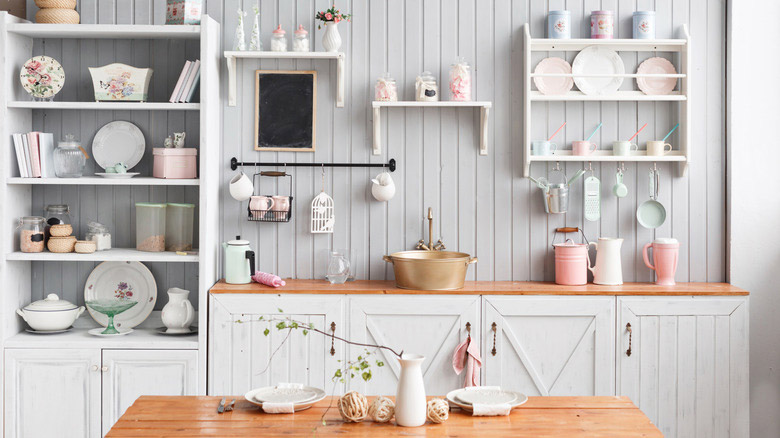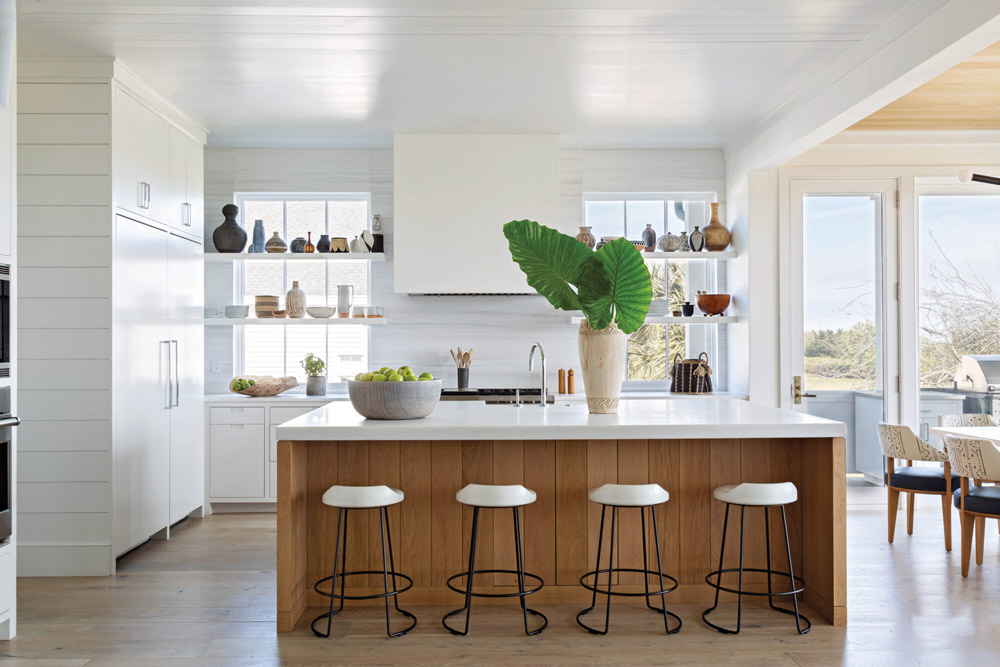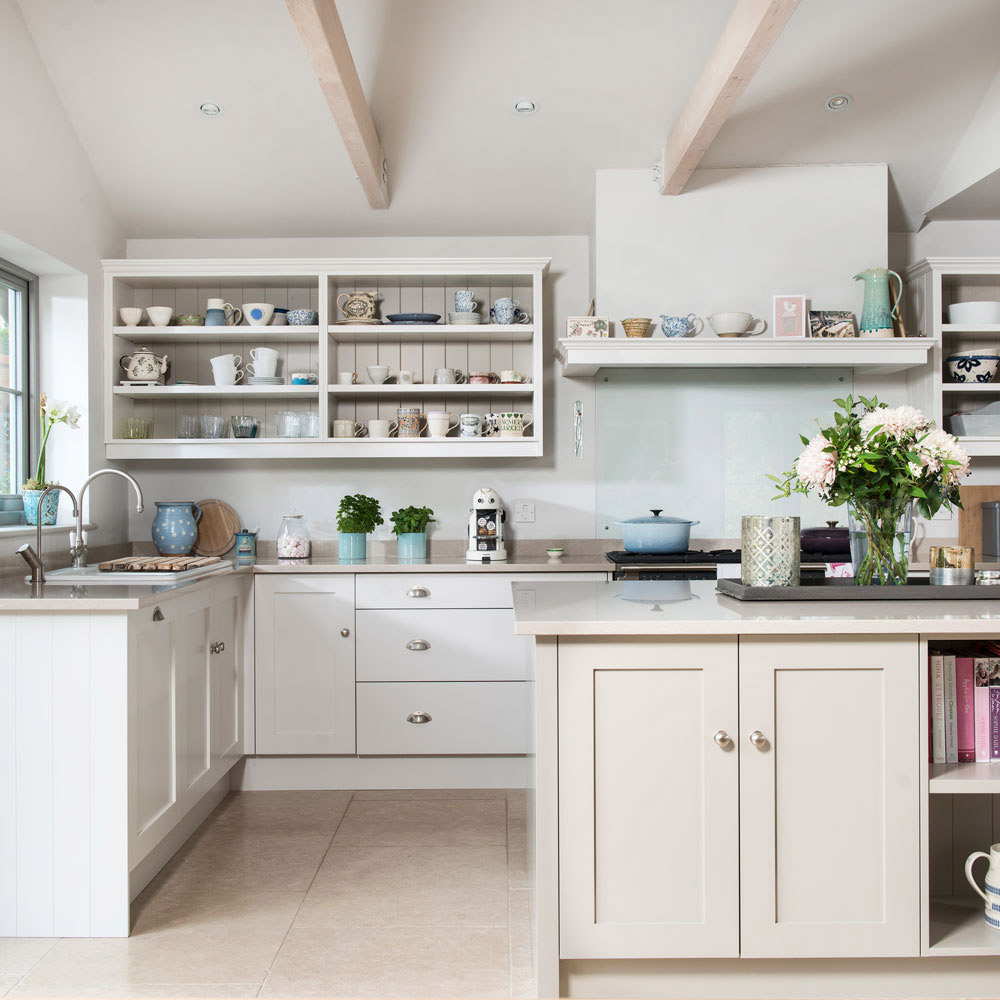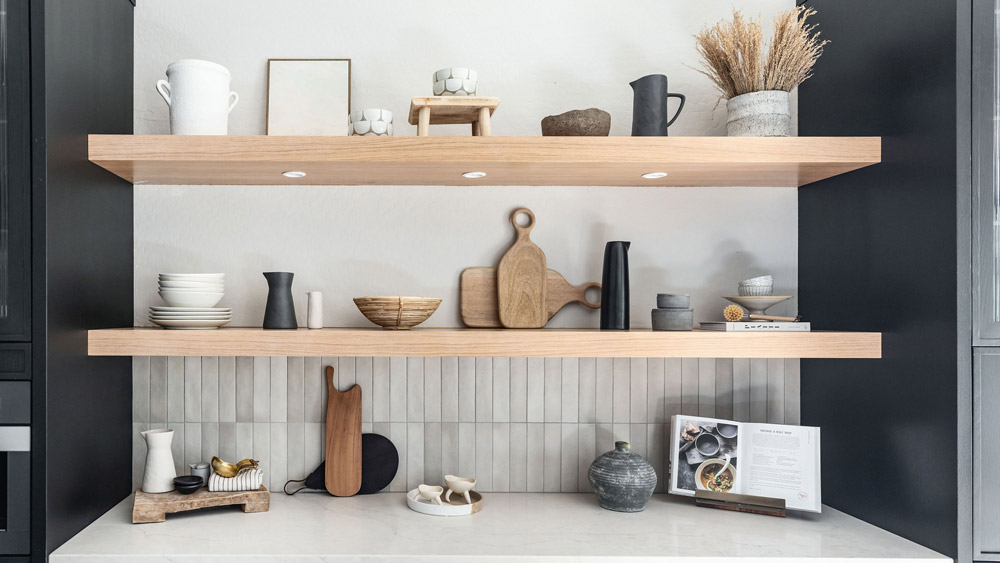Open shelving has become a staple in modern interior design, celebrated for its clean lines, functional display, and minimalist charm. But as popular as they are, open shelves also pose a common challenge—how do you keep them looking intentional and stylish without slipping into chaos or clutter?
The truth is, achieving a clean and curated look with open shelving is less about what you have and more about how you style it. In this guide, we’ll break down how to style open shelves without clutter so your space feels both organized and design-forward.
Contents
Why Open Shelves Often Look Cluttered
Many people fall into the trap of over-decorating or over-utilizing their open shelves. When every inch of shelf space is covered, it creates visual noise and leaves no breathing room. Other common mistakes include mixing too many unrelated items, using clashing colors, or lacking a unifying theme. Without structure or intention, even the most beautiful items can look chaotic.
Cluttered shelves not only impact the aesthetics of a space but also affect how it feels. A visually messy setup can create a sense of disorder and stress, even if everything is technically in its place.
Step-by-Step Guide to Styling Open Shelves Without Clutter

Step 1: Start with a Clean Slate
Begin by completely clearing your shelves. Removing everything allows you to assess each item and make intentional choices about what deserves to go back on display. Wipe down the shelves and look at your space with fresh eyes. Think of your shelves as a blank canvas.
Step 2: Define a Clear Purpose for the Shelf
Before you begin styling, ask yourself: What is this shelf for? In a kitchen, it might need to serve both a practical and aesthetic role—holding dishes or pantry items while contributing to your decor. In a living room or office, it might lean more decorative. Defining the purpose will help guide your choices and prevent overcrowding.
Step 3: Curate, Don’t Display Everything
Not everything needs to be out in the open. Instead of using your shelves as storage for everything you own, treat them as a curated display. Choose only items that serve a purpose or contribute visually to the room. Store less attractive or less-used items elsewhere.
When curating, focus on quality over quantity. Choose items that are meaningful, beautiful, or necessary—then group and arrange them with intention.
Step 4: Use the Rule of Thirds and Odd Numbers
Designers often rely on visual principles like the “rule of thirds” to create balanced, engaging compositions. Arrange items in groups of three or five, mixing sizes and shapes for visual interest. Odd-numbered groupings tend to feel more natural and dynamic than even-numbered arrangements.
Place taller or anchor items at the ends or in the back, and layer smaller items in front. This technique adds depth and prevents your shelves from feeling flat.

Step 5: Mix Heights, Textures, and Shapes
Avoid monotony by mixing different types of items—books, vases, ceramics, plants, baskets, and framed art. Vary the height and width of these objects to create contrast and visual movement.
Textures are also essential. Combine smooth materials like glass or ceramics with rougher textures like woven baskets or wooden bowls. This interplay of materials keeps the eye engaged.
Step 6: Stick to a Cohesive Color Palette
One of the fastest ways to make a shelf look polished is to stick to a unified color palette. Choose one or two dominant colors, then add in a few neutrals to ground the arrangement. Matching or coordinating colors creates visual harmony and instantly reduces the feeling of clutter.
In kitchens, for example, this might mean using clear jars, white dishes, or matte black containers. In living rooms, you might opt for natural tones with hints of brass or soft pastels.
Step 7: Embrace Negative Space
Perhaps the most overlooked element of shelf styling is empty space. Every shelf doesn’t need to be full. Leaving some areas open allows each grouping or object to shine and gives the overall design room to breathe.
A good rule of thumb is to fill no more than 60–70% of each shelf, leaving the rest for negative space.
Storage That Doubles as Style
If your shelves need to be functional as well as decorative, use storage that looks intentional. Baskets, wooden crates, decorative boxes, and matching jars can hold less-attractive essentials while contributing to the overall aesthetic.
In kitchens, group similar pantry items into labeled glass containers. In bathrooms, store toiletries in woven bins or minimalist ceramic jars. In offices, file folders or chargers can be hidden in closed boxes that complement your decor.
This approach keeps shelves neat and makes practical items part of your visual narrative.

Seasonal Rotations & Shelf Maintenance
Open shelves require more maintenance than closed cabinets. Dust can collect quickly, and visual clutter creeps in as we add items over time. Make it a habit to reassess and restyle your shelves every season or few months.
Rotate in seasonal decor like greenery in spring, pumpkins in fall, or candles in winter. Regularly declutter by removing anything that feels out of place or unnecessary. This keeps the space fresh and avoids the accumulation of random items.
Common Styling Mistakes to Avoid
- Overcrowding small objects: Too many little things can feel chaotic. Use fewer, larger items when possible.
- Ignoring vertical space: Stack books, lean framed prints, or use tall vases to create height.
- Using clashing colors: Stick to a narrow palette for cohesion.
- No anchor items: Always include a few bold or substantial pieces to ground your styling.
- No practical use: Especially in kitchens or offices, styling should support function.
Examples of Well-Styled Open Shelves
Well-styled shelves typically have a combination of:
- Large and small items
- Varying textures (wood, metal, ceramic)
- Greenery or florals for life and softness
- A mix of horizontal (books, trays) and vertical (vases, frames) elements
- Deliberate negative space
Whether it’s a Scandinavian-inspired kitchen shelf with white dishes and natural wood, or a bohemian bookshelf layered with baskets, books, and plants, the best shelves feel both effortless and intentional.
FAQs About Open Shelf Styling
How do I keep my open shelves from getting dusty?
Dust weekly and limit the number of small items that attract dust quickly. Use covered containers for items that aren’t used often.
Can open shelves be both functional and pretty?
Yes. Use attractive containers and only display what is used often and aligns with your room’s style.
What are the best items to display on open shelves?
Books, vases, candles, small plants, framed art, decorative bowls, and meaningful objects are all strong choices.
How many items per shelf is ideal?
This depends on the size of your shelf, but a good guideline is to leave 30–40% of the space empty.
Do open shelves make a space look bigger or smaller?
When styled well, they can make a space feel airier and more open. Overcrowded shelves, however, can have the opposite effect.
Final Thoughts
Styling open shelves without clutter isn’t about minimalism for minimalism’s sake—it’s about intentional curation. By following a few simple design principles and regularly maintaining your shelves, you can create a display that’s both functional and beautiful. Whether in the kitchen, living room, bathroom, or office, well-styled open shelves can elevate your entire space.

